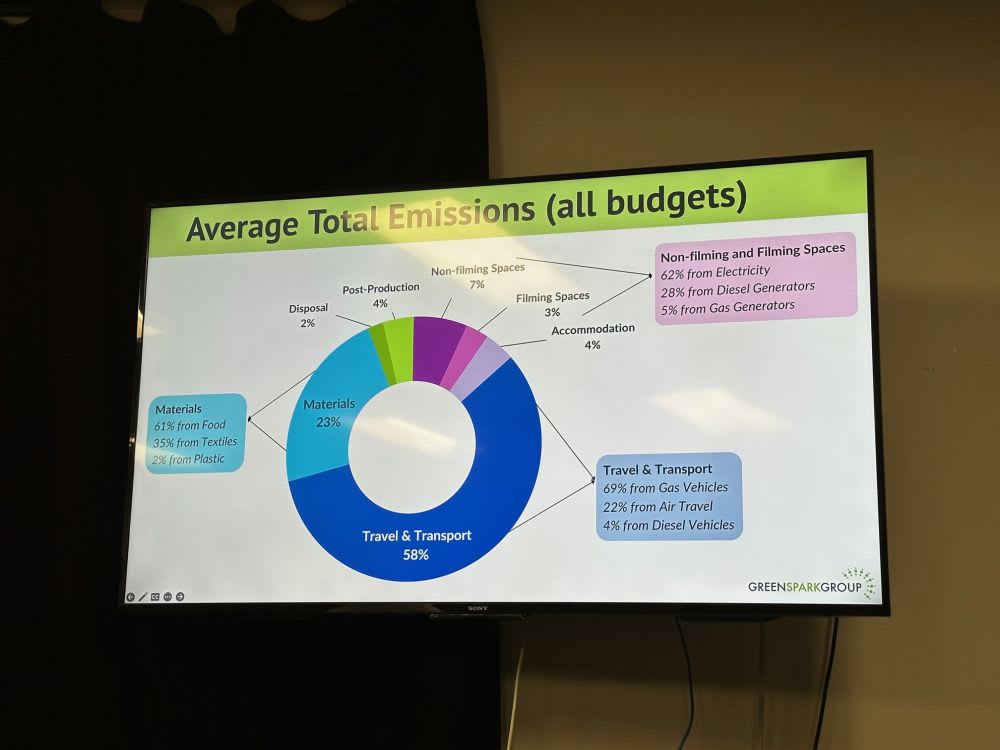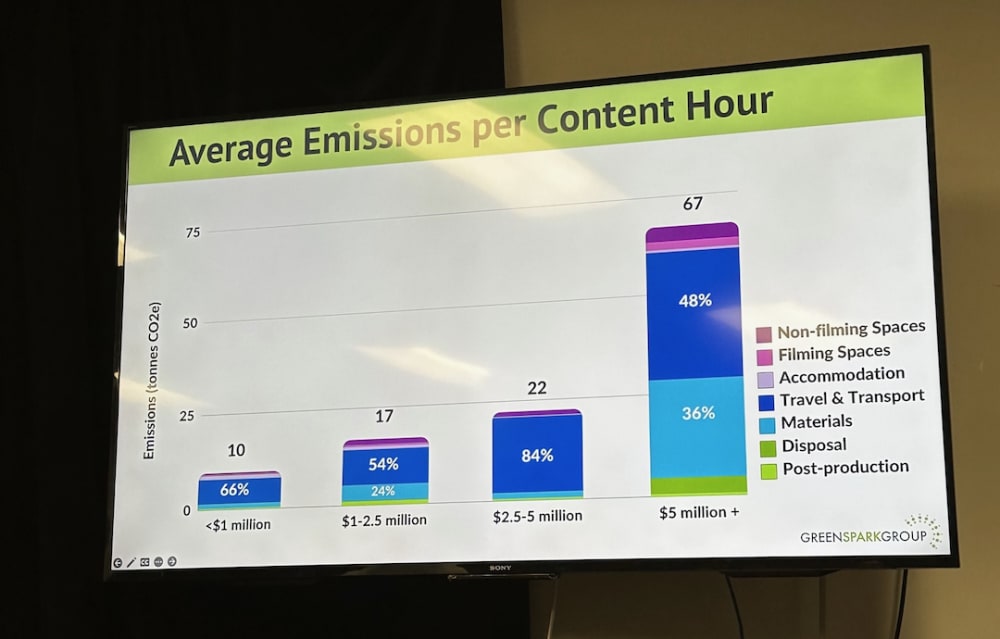Canada's sustainability expert reveals new insights into film production impact
Telefilm commissioned this research to capture the production practices specific to Canada
By Priyanca Rajput 22 Sep 2023

Senior sustainability and social performance expert Andrew Robinson shared the latest insights from his report that aims to make production practices “more mindful” for current and future filmmaking.
Green Spark Groups’ sustainability expert Andrew Robinson has dedicated the last 20 years to making production practices “more mindful, respectful and sustainable”.
The idea behind the research, Robinson says at the Toronto International Film Festival’s sustainable filming panel, is to zero in on the numerous reports that analyse the environmental impact and carbon footprint of film and television production in various jurisdictions across Canada.
The study took a sample of 22 productions which totalled 140 hours of content. It looked at budget ranges that were in alignment with Canadian Medical Protective Association (CMPA)’s annual profile report which ranged from 500,000 to over 5m, and went across all regions of Canada.
“The distribution of the productions that participated in the study was in alignment with the act of distribution of productions in various regions in Canada,” notes Robinson.
The genres that participated in the study included: fiction documentary, lifestyle and variety, and did not include children’s/animation or in-house broadcasting.

Robinson also looked at the total number of productions over the last three-five years in the country and extrapolated it to have “Canadian industry impact”. For feature film, it produced an annual impact of 5000 tonnes per year for productions For television series it is over a million tonnes per year.
The report is based on the average emissions ‘per content hour’ as every film has a different budget, crew size, and different region. Broken down by the hour, it analyses the average carbon emission related to production.
The result “tells us that there's a there's a linear relationship between emissions rate and budget but does not necessarily mean that to be more sustainable, to be more environmental, you have to lower your budget — it just means that you have to look at where you're spending that money, where is it really emissions-intensive and to de-couple you're spending with that emissions intensity,” explained Robinson.

One of the key areas in which the emissions derived included travel and transportation, which is over 50% in most of the cases, followed by material consumption and in third place is “non filming spaces” which is where Canada’s diesel generators are housed (for the productions part of the study) used primarily for temporary offices, trailers and base camp and the fuel consumed in the generators.
Fiction film emissions are far greater than the documentary as more materials are created, there is greater crew, and a longer production cycle. In both cases, well over 50% of the emissions are coming from travel and transportation, Robinson outlined.
“It makes sense, that the emissions for documentary is primarily how we're moving around, and for fiction well over a quarter is from our carbon material consumption.”
For four films that premiered at TIFF, on average, all of the production methods in Canada have almost 60% travel and transportation.

“We’re a big country, we tend to think that that's probably coming from air transportation, but it's only about 21%.
“Largely 69% is from the way that we're moving around in our gas-powered vehicles - so how are we getting to location, how often are we going back and forth - that's really where the majority of our emissions are coming from in Canada — that's distinct from other regions in the world where about half the emissions were coming actually from generators or certainly not as much from gas-powered vehicles.”
The report also found that the majority of Canada’s material consumption comes from food and catering.
Robinson concluded there are opportunities during the “planning phase” to think about how productions move from place to place. “Do we need to go to those locations as often as we do? Can we carpool? Can we use electric vehicles? Can we use hybrid? Can we take a train instead? Can we use local crews there instead of having to ship everybody?,”
“There all kinds of things that we can look at, we have just about every solution that we want to be more sustainable exists today, but they require us to use the planning phase to think about ‘what is it that I want to consume which are the materials, how do I want to move people around, does it need to be in this way, does this shot need to happen in this location, does it need to have a vehicle what are the opportunities for me to think about do I need fuel or do any power like how can I access the power that I need to get the shot that's required and how does my budget support that decision making process’”.
‘New insights into environmentally sustainable filmmaking’ formed part of TIFF 2023's Microsession programme.
Latest news & features
Featured profiles
Promote your services with KFTV
Choose from three profile types - Basic, Silver and Gold
Create ProfileWe offer a range of display advertising opportunities.
Learn More


